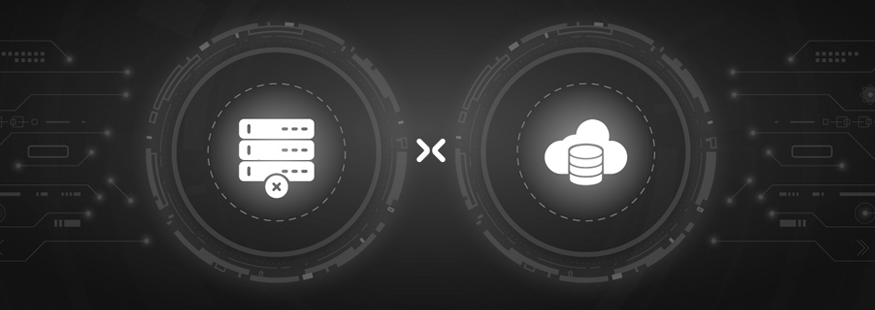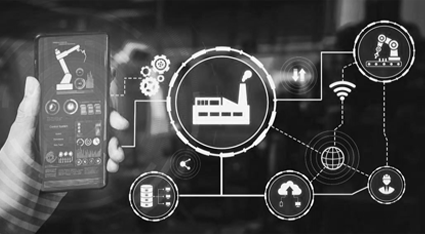Quick Summary
Many businesses are investigating ways to quicken the pace at which they create their IT infrastructure to stay competitive. The short time frames necessary for this transformation are made possible by rapid and reliable deployments to the most modern systems.
Serverless functions and containers are the most popular ways to host these applications. What are they, how do they vary, and how do you choose which one to use? In the blog, we’ll examine the key distinctions between serverless computing and containers and lay out some criteria you can use to make an informed choice for your next project.
What are Container-Based Programs?
Containers are small and lightweight virtual computers or deployment packages. They make it possible to encapsulate all the required components for running your program in a single file. To execute an application in a container like Docker, the program and its prerequisites must first be packaged. Then, you may use any server to execute these containers.
An image (like a Docker image) is a template used to generate a container, which is then used to execute an application. A text file called a Dockerfile includes instructions on constructing a Docker image and may be used to produce images. You may use this picture to make as many containers as you want, each with its settings and specifications. They may then be executed remotely using a container runtime technology such as Docker Engine without additional libraries or tools.
Containers are great for deploying to cloud platforms like AWS, GCP, and Azure because they provide a secure, isolated space for your code. To deploy and manage containers on a large scale, you may utilize a container orchestration platform like Kubernetes. They are portable from one server to another without causing any compatibility concerns, making them ideal for cloud installations.
What are Serverless Applications?
In a serverless architecture, there are no persistent states for the program to access. Function as a Service (FaaS) is used in serverless applications since it can bundle and deliver code as a standalone executable. The program reacts to triggers like an S3 bucket receiving a file upload or an HTTP request being received.
A serverless application eliminates the need to set up and maintain physical servers. The cloud service provider’s servers run the program and turn it off when they’re done. In addition to AWS Lambda, Azure Functions and Google Cloud Functions are more FaaS options. Since there is no need to manage servers or scale apps, serverless applications may greatly simplify deployment and management.
This method is less complicated to maintain than containerization, and it may save money as you only pay for the time your code is being executed. Serverless installations, although convenient, have some limitations.
Comparing serverless computing and containers
Serverless apps and containerized ones have several commonalities. However, there are also notable distinctions.
In most circumstances, developers may forget servers and infrastructure using serverless functions or containers. Separate from the guest application and operating system, the host hardware and operating system are isolated in their partition. Serverless services and containers eliminate the need for DevOps teams to worry about the underlying hardware.
- Both types of hosting may grow with your needs by adding resources like a faster CPU, more RAM, or a more robust network.
- This is not the case when containers are used with hardware located inside a company’s own data center. In such an environment, hardware provisioning is often performed by a separate infrastructure team using manual processes.
- Traffic- and demand-based scaling is also conceivable. The open-source orchestration system Kubernetes can instantly grow containers horizontally. Similarly, many FaaS solutions can autonomously scale up in response to changes in key metrics like the volume of requests made to the underlying application.
- CircleCI, one of the leading continuous integration solutions, is compatible with serverless functions and containers. A fresh container image or serverless function may be deployed to your infrastructure provider automatically once a build is successful.
How are containers different from serverless architecture?
Despite their similarities, the two technologies are different enough to be used for different purposes. Both serverless architectures and containers are elastic, allowing dynamic scaling to meet fluctuating demand. However, to grow automatically depending on predetermined criteria, DevOps teams that use containers need container orchestration software such as Kubernetes. Meanwhile, this functionality is often included in many FaaS systems.
Small, specialized modules with a particular purpose are typical examples of serverless functions. They often only last a few minutes or even seconds if they are directed towards the public. Containers, however, are ideal for larger, longer-running, or multi-purpose applications.
Storage containers are used for:
- Transitioning away from on-premises hardware and software
- Adapting a single-purpose program to run on the cloud
- Creating a program that can function for several hours
A major distinction is that your provider will only charge you for the period your serverless activities are active. However, the cost might increase if you maintain many container instances active at all times.
If your software is lightweight and would function better as a serverless app, you might be wasting a lot of money and having a negative influence on the environment.
It’s important to note, however, that serverless options for containers do exist. You are only charged for the time your containers take to complete their run on the AWS Fargate platform.
Another distinction is that serverless functions raise the issue of vendor lock-in to a greater degree. The code required to interface with related services might quickly bind you to a certain ecosystem.
In contrast, containerization facilitates vendor agnosticism. Because of this agnosticism, containers can run in any language, but serverless apps can only run in a few. The languages offered by each service provider are different.
When Developing an Application, Should You Use Serverless or Containers?
It is important to think about the many elements that affect these cloud development services when selecting the architecture for constructing your application. However, the scale and structural integrity of the building should be your top priorities. The serverless architecture is well-suited for separating tiny applications into independent services. However, containerized architecture is the better choice for a bigger and more complicated application. Let’s examine the impact of these variables on each application.
Building and Testing Software Applications
The demand for developers to provide high-quality code is particularly intense during the development of an application. Working with new technology and learning how it works compounds the difficulty. The developer’s proficiency is measured by how fast they can get it up and running, how easily they can make modifications, and how easily they can spot faults.
Applications Without a Server
Serverless apps are simpler in every way compared to their containerized counterparts. These programs are written in a single language but aren’t binary-compiled. Instead, developers will group them to form a function. The cloud development service provider handles server installation and management, so you don’t have to. Even while working locally, it lets you give your whole attention to coding and testing.
Software Packaged in Containers
Because developers may use whatever language or framework they choose, container-based app development is far more efficient. Then, the container app compiles it into a binary to run in any setting with the same dependencies. They are more portable, so you can move the process along more quickly to where it needs to be (the production environment).
Scalability and efficiency
The scalability of a system is its capacity to handle more users or higher volumes of traffic without degrading performance. The serverless method is popular, and many companies are also experimenting with containerized apps triggered by serverless operations.
To initiate container data processing, developers may utilize a serverless function as elementary as a file upload. More control may be exerted over the underlying infrastructure, as well as more scalability, lower costs, and the possibility to use bespoke libraries when a hybrid approach is used.
Applications Without a Server
Developers can maintain scalability and performance even as demand grows using a serverless platform. However, there are more viable options for programs that need instantaneous results. Serverless application performance may be slower than that of dedicated servers. This occurs because they are run on demand by a cloud development services provider.
Software Packaged in Containers
Compared to their serverless equivalents, applications built on container technology have more scalability. Why? Because they can swiftly scale by adding or removing containers as needed. In addition, they provide more compartmentalized settings, so the failure of one container won’t affect the others. This is an advantage for containerized apps versus serverless ones.
Implementation and Design
As was previously said, the deployment is profoundly affected by the architecture you choose. Programming is prioritized above managing servers in a serverless architecture. The code is then packaged as a serverless function, and the runtime automatically calls it whenever a request is received. Containers package programs in a way that isolates them from their supporting environment. Both architectural types have their unique deployment strategies.
Applications Without a Server
Serverless apps run on the IaaS paradigm of cloud computing. The cloud service provider here provides a VM on a pay-per-use basis. The onus is entirely on the client to provide workloads, manage the VM, and grow it as necessary. The client needs to be more informed about the availability of the servers. Serverless computing makes it possible to charge customers for the resources they use by how long and how often their applications operate.
Applications that Use Containers
Containerized apps may run on physical servers, virtual machines, dedicated container instances, or even be hosted by a third party. Their engines need a container that specifies the necessary configuration and data in the form of an image. Web servers, database servers, and application servers are some of the many dependencies that may be included in a container image. However, containers are stateless, meaning that when they are shut down, they lose all of their contents. However, they shine when used for stateful applications, which need persistent data storage and retrieval.
Safety and Portability
When deciding on an architecture, portability should be a top priority. Faster integration and accessibility with each service are crucial when utilizing numerous services simultaneously.
Applications Without a Server
Avoid vendor lock-in by routing your endpoints and URLs via a single domain. It is still risky to integrate FaaS into a DevOps framework while moving your infrastructure. There’s also a good chance your team won’t remember who created what function and whether or not it’s still being used.
Applications that Use Containers
It is less hassle to relocate container-based apps since their code may be packaged and deployed independently. As a result, they provide great mobility and demand little in the way of time or energy. Additionally, containers enable you to spin up new software versions when time-to-market is tight and innovation is paramount. Microservices are a great way to break apart monolithic apps while you’re just getting started. However, upgrading container hosts, images, and engines requires careful orchestration due to interdependencies.
To Sum Up
Is there ever a definitive resolution to the argument? We don’t think so. The cases for serverless computing and containerized application frameworks are squared away. Which one you choose to use depends on the kind of app you’re building and its intended use. While containers provide portability and segregation, serverless allows for elastic scaling with little overhead.
Similarly, because serverless computing is event-driven, it is the optimal choice when just temporary functionality is required, such as when creating an API server. An AI program, for instance, needs little more than on-demand access to computational resources. Container design, on the other hand, is perfect for developing scalable, always-on, multi-tiered systems.







